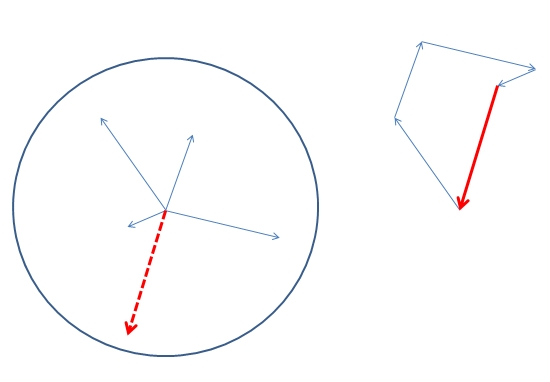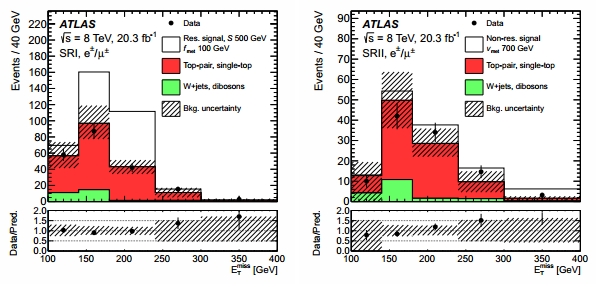The idea that new physics may first manifest itself by the indirect signal left by a particle which does not interact with ordinary matter has roots in the cosmological observations of a large amount of dark matter in the universe. If the universe is mostly made by dark matter, maybe that is because it is made up for a large part by a non-interacting, massive particle which is a relic of the big bang.
The SUSY neutralino, for example, would elegantly solve the mystery: prevented from decaying by being the lightest supersymmetric particle (in so-called "R-parity conserving models"), it would be condemned to live forever, moving around as a ghost and producing as a most visible effect a gravitational pull on visible matter (of course we are talking of a collective effect!).
A search for "invisible" signatures at the LHC does not only target weakly-interacting particles that are perfectly stable: one must also consider ones that decay with lifetimes long enough that they have time to escape the detector. In fact there is a broad class of theories that potentially produce the signature of large missing transverse energy.
A significant missing transverse energy results from a non-null vectorial sum of all observed particles momenta coming out of a proton-proton collision: as the colliding protons do not possess any momentum in the direction transverse to the beams, the product of their collision must retain that property; hence the vectorial sum must vanish, give or take the experimental resolution with which momenta are determined by the experimental apparatus. A non-vanishing sum is "missing transverse momentum", or missing transverse energy once one accepts that energy and momentum cannot be distinguished for the missing object.

In the graph above please first consider the part on the left: it is supposed to show a transverse view of the detector (such that beams punch through your screen orthogonally). The blue arrows represent observed particles (or hadronic jets, or what have you) and their momentum: the longer the arrow, the larger the momentum. Disregard the red arrow for now. If you only see those blue particles, you can compute the vector sum of their momenta: this is done by attaching each vector on the tip of the previous one, as you can see on the right diagram. Once you do that, you are left with an open polygon: you do not get back to the origin. That means there is something "missing": the vector sum of momenta does not add up to zero. The missing particle(s) has momentum estimated by the red arrow, which is also reported in the diagram on the left, dashed.
In the ATLAS analysis, the models of new physics considered include the production of this invisible particle together with a top quark. Why a top quark ? Well, because. The top is a special particle, due to its large mass. This singles it out as a possible privileged interlocutor with a new physics sector, and at the same time guarantees that the final state signatures of production of the invisible particle will be striking. If you look at the Feynman diagrams below you will understand what I mean: we are looking at the production of a single top quark, which recoils against the escaping invisible particle. Such events are quite distinguishable from backgrounds, due to the characteristic features of top quark decays.

Above, each of the diagrams must be read from left to right. In the first two quarks create a scalar resonance S which decays into a top quark and a weakly-interacting fermion f. In the second diagram a up quark and a gluon fuse, the resulting up quark then releasing its large virtual energy by creating a top and a bosonic invisible particle.
To search for the above processes ATLAS selects events with an electron or muon of high momentum, accompanied by a b-quark-tagged jet and large missing transverse energy. The three signals are due to the top quark decay, but the missing energy receives a large contribution also from the escape of the invisible particle. In fact, the amount of missing transverse energy is the final variable to examine once backgrounds have been reduced and then carefully estimated in proper control regions.
In the figures below you can see the data distribution in two separate signal regions (defined by different kinematical selections targeting the two different production modes, resonant and non-resonant) compared with backgrounds (coloured histograms) and the contribution from the new physics processes described in the Feynman diagrams: on the left the resonant signal of the S particle, on the right the signal from the non-resonant processes.
The hatching represents the uncertainty on the background estimation. The fact that the data points remain well within the hatched regions should be enough for you to guess that there is nothing anomalous in the data, and hence that the result of the analysis will only be a upper limit on the cross section of the searched processes.

So, too bad -there is no new particle showing up in monotop plus missing energy events in ATLAS. However, next year the energy of the LHC will be almost doubled, and this search will again be an interesting one to pursue.





Comments